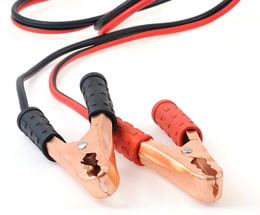 The holiday season can be overwhelming and demanding. It can also be filled with high expectations. Children, young and old, are busy creating their Christmas lists. Depending on their age, the list can get expensive very quickly.
The holiday season can be overwhelming and demanding. It can also be filled with high expectations. Children, young and old, are busy creating their Christmas lists. Depending on their age, the list can get expensive very quickly.
Over the years, I’ve tried to teach my kids to be grateful for what they have; however, I still hear comments from my daughters (ages 14 & 19) about how our house isn’t big enough, or my car isn’t good enough. My quick response to both of them is always the same: When you have a job, you can buy what you like. My long-term goal is to continue to show them how to be grateful for what they’ve received.
Here are some tips below to teach your kids how to be thankful this holiday season and all year round:
1. Lead by example. Say “thank you” in your home. Show appreciation to your kids when they do something you asked of them. When others serve you, like at a store or restaurant, give them a genuine thank you. These two simple words can be very powerful. It lets others know you appreciate them. A simple thank you could make their day!
2. Don’t buy everything on their Christmas list. It’s natural to feel the need to buy your kids every present on the list. When my oldest daughter was young, I stood in the cold in front of Toys R Us so I could buy her the Barbie Dream House. Unfortunately, the more you give, the more they want.
Talk to your kids about their Christmas lists. Find out what they really want, then prioritize the list accordingly. If you buy everything on their lists, they won’t appreciate everything they received. If you buy the presents that are the most meaningful, you can teach them to be thankful for what they received. I always try to teach my children it’s about quality, not quantity.
3. Skin in the game. When they have no skin in the game, they want everything. If you make them use their own money, it’s interesting how fast they change their tune. When kids have to save for something they really want, it helps teach them that money doesn’t grow on trees. It also teaches them to appreciate what they have. Moreover, when the day comes to make that big purchase, they can feel good about it.
4. Encourage them to volunteer. Volunteering at a local charity and serving those in need can be an amazing experience. It can help them put things in perspective and teach them to be grateful for what they have. Volunteering also allows you to have meaningful conversations before, during, and after an event.
5. Patience is a virtue. Kids won’t understand gratitude right away. Sometimes as adults, we don’t show gratitude or appear to understand it. For it to finally sink in, you must continually show them how, so be patient.
6. Teach them to be gracious and respectful all year round. Once the holiday season ends, gratitude and respect for others doesn’t go to the curb with the Christmas tree. Teaching them to be gracious and respectful all year is important.
SOURCE: West Bend, Scott Stueber on Dec 20, 2016 9:21:32 AM
 Have you ever jumped into your car, turned the key, and nothing happened? If so, did thoughts like this start racing through your head?
Have you ever jumped into your car, turned the key, and nothing happened? If so, did thoughts like this start racing through your head? Over the years, my daughters have repeatedly asked my wife and me for a pet. Unfortunately for them, the answer had always been “no” for a number of reasons. Probably the biggest is the time commitment.
Over the years, my daughters have repeatedly asked my wife and me for a pet. Unfortunately for them, the answer had always been “no” for a number of reasons. Probably the biggest is the time commitment. When it comes to making a purchase, there are typically many items to choose from which leads to making decisions and choices. Sue Gerlach, West Bend senior personal lines underwriter, explains that insurance is no different.
When it comes to making a purchase, there are typically many items to choose from which leads to making decisions and choices. Sue Gerlach, West Bend senior personal lines underwriter, explains that insurance is no different.